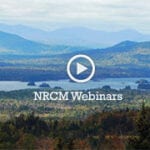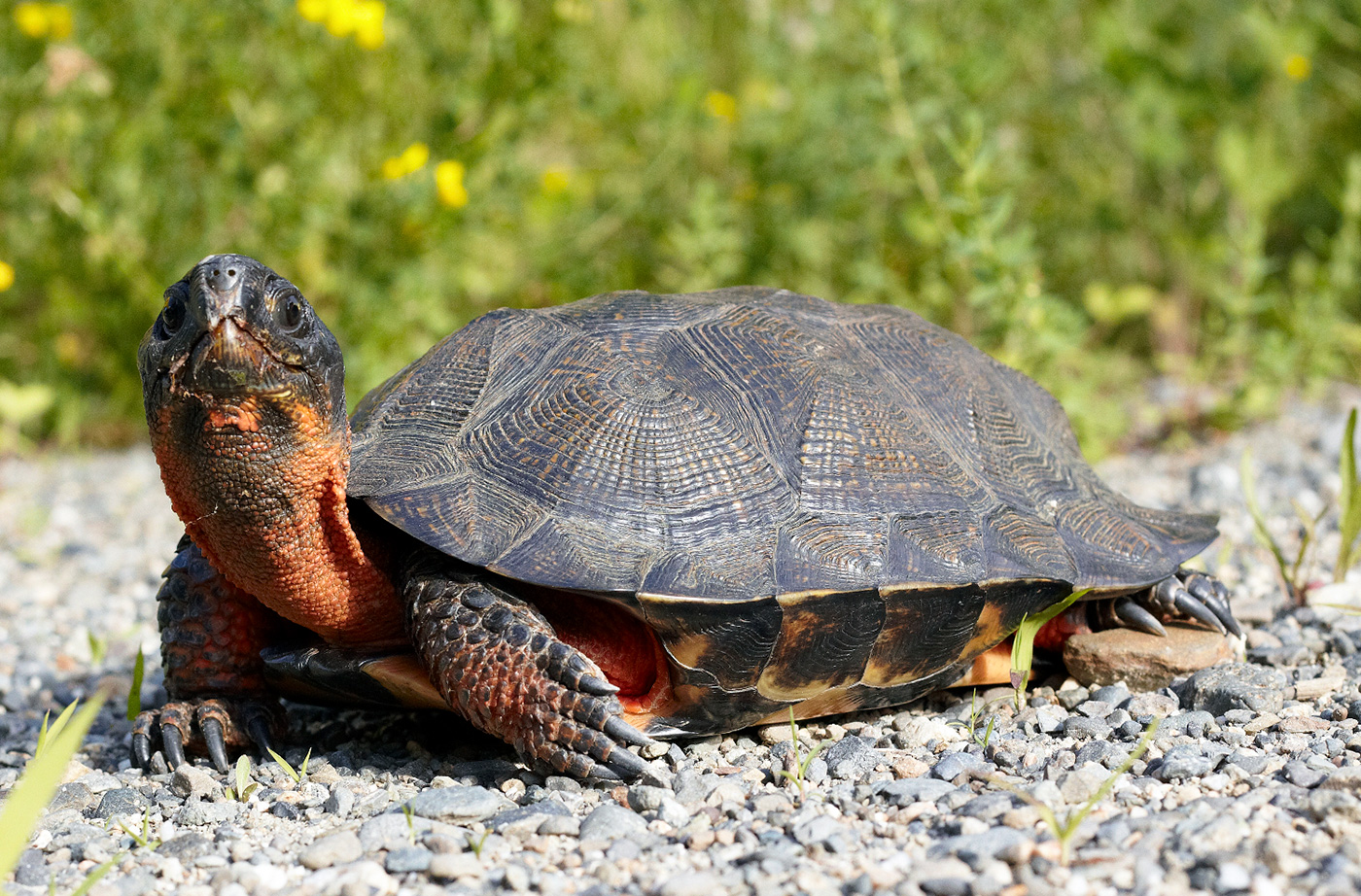Wood Turtle Glyptemys insculpta Cool Fact: * The temperature of the developing eggs determines whether the offspring will be male or female. If eggs incubate above 87.8 °F the babies will be female; if below 81.86°F, they will be male. Wood turtles have likely been in New England for about 10,000 years, following the retreat Read More
Creature Feature
The Natural Resources Council of Maine works to protect important wildlife habitat for our vast array of animals that live in our state. Our Creature Feature is a way to highlight those animals and share "cool facts" and other important information about them.
NRCM's Creature Feature highlights birds, fish, mammals, and other wildlife that play an important role in the nature of Maine. We have featured "creatures" that are directly affected by our work to protect our clean waters (sea lamprey, Atlantic salmon, lobsters, etc.) and protect wildlife habitat in Maine's North Woods, including in our new Katahdin Woods and Waters National Monument (moose, Canada lynx, black bear, etc.)
Creature Feature: Bobcat
Bobcat Lynx Rufus 3 Cool Facts: Did you know that the bobcat’s fifth toe is raised on its front feet, so there is no fifth impression when it walks? Bobcats can run at speeds up to 30 mph — the same speed as domestic cats. President Calvin Coolidge once had a pet bobcat named “Smoky.” Read More
Creature Feature: Woodchuck
Woodchuck Marmota monax Cool Fact: Woodchucks are also called whistle pigs (because of the alert whistle they make when alarmed), earth pigs, land beavers, and grass rats! Most of us are familiar with the legend of the groundhog seeing its shadow (or not) to determine whether there will be six more weeks of winter or Read More
Creature Feature: Black-capped Chickadee
Black-capped Chickadee Poecile atricapillus Cool fact: Studies have shown that the Black-capped Chickadee grows new brain cells every fall, in part to help it remember where it has cached the thousands of seeds it hopes to feed on through the winter ahead. The chickadee was chosen as the Maine State Bird in 1927. Although the Read More
Creature Feature: Common Loon
Common Loon Gavia immer Cool Fact: In the non-breeding season when they are on the ocean, loons show modest gray upperparts and white underparts, but in the summer months (breeding season) adults have a striking black and white neck and back, and a black head and bill. Common Loons are among Maine’s most beloved and Read More
Creature Feature: Dark-eyed Junco
Dark-eyed Junco Junco hyemalis Cool facts: The oldest recorded Dark-eyed Junco? At least 11 years, 4 months old when it was recaptured and rereleased during banding operations in West Virginia in 2001. It had originally been banded in 1991, also in West Virginia. Interestingly, a flock of juncos is often referred to as a “blizzard.” Read More
Creature Feature: Spotted Salamander
Spotted Salamander Ambystoma maculatum Cool Fact: Spotted salamanders are the only known animals with a backbone that can photosynthesize—that is, turn sunlight into food, like a plant! While an uncommon sight for most of the year, many a Mainer has encountered a spotted salamander at least once in their lifetime. Typically, spotted salamanders (colloquially called Read More
Creature Feature: Quebec Emerald Dragonfly
Quebec Emerald Dragonfly Scientific name: Somatochlora brevicincta Cool fact: Quebec emerald dragonfly larvae hatch in places called “flarks.” To find the Quebec emerald, wait for the last week of June. From then until about the middle of August, go north of Moose River and west of Moosehead Lake, in Somerset County, Maine, where sphagnum moss Read More
Creature Feature: Snowshoe Hare
Snowshoe Hare Scientific name: Lepus americanus Cool fact: Except in very southernmost Maine, where they overlap with the cottontail rabbit, snowshoe hares are the only wild “rabbit” species in the state. Somewhere right now, in the dense spruce-fir forest of northern Maine, a wild cat is stalking a white hare. The cat, a lynx, is Read More




















